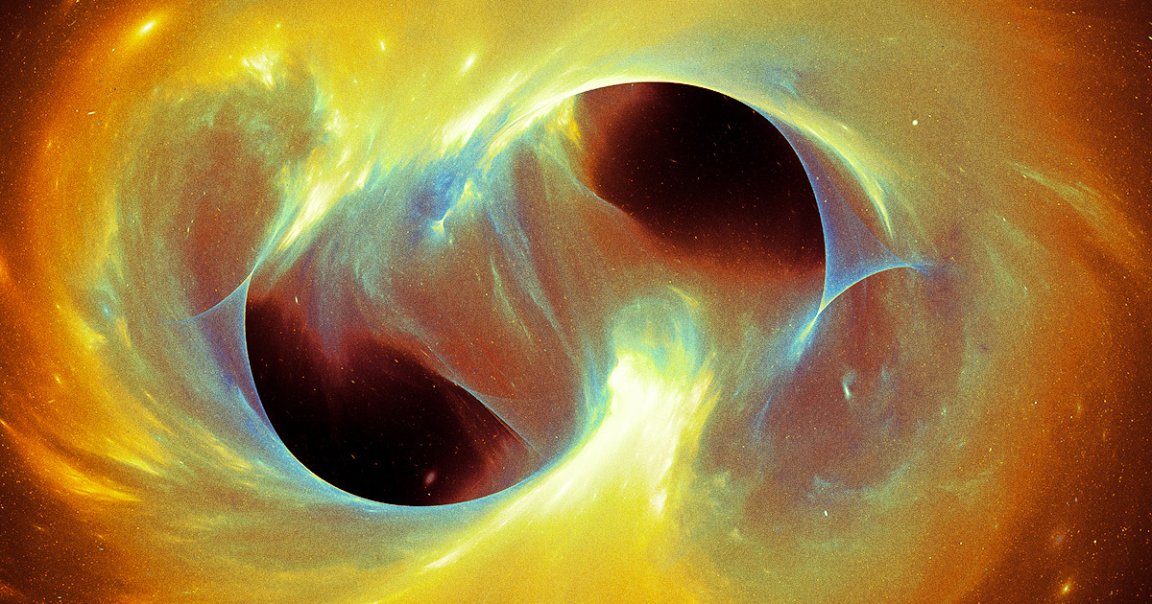
Space Goth Grand Slam
In an effort to understand the origin of our galaxies, astronomers have spotted an insane, galactic showdown for the ages: four giant black holes in dwarf galaxies destined to collide, though not all in the same place. But boy, did they score a grand slam of astronomy firsts.
Using NASA’s Chandra X-ray Observatory, the astronomers kept a close eye on two separate pairs of merging dwarf galaxies. One is in a cluster 760 million light-years away, the other, over 3.2 billion. Unfortunately, us humans are relegated to the nosebleeds for this one.
Still, we don’t need to be close up to understand the significance of the findings, which were published as a study in The Astrophysical Journals. According to the researchers, it’s the first evidence of large black holes in merging dwarf galaxies at all.
“Astronomers have found many examples of black holes on collision courses in large galaxies that are relatively close by,” explained Marko Mićić, lead author of the study and an astrophysicists from the University of Alabama, in a press release.
“But searches for them in dwarf galaxies are much more challenging and until now had failed,” he added.
Dwarfing Achievements
It’s the dwarf galaxy angle that really makes this discovery significant. While they may not be as stunning in scope, dwarf galaxies are indispensable to understanding the evolution of galaxies as a whole.
The theories vary, but cosmologists generally believe that the initial dwarf galaxies, which formed hundreds of millions of years after the Big Bang, merged over time to form the large ones like our own that we’re so familiar with.
“Most of the dwarf galaxies and black holes in the early universe are likely to have grown much larger by now, thanks to repeated mergers,” said co-author Brenna Wells, an undergraduate researcher at UA, in the release.
“In some ways, dwarf galaxies are our galactic ancestors, which have evolved over billions of years to produce large galaxies like our own Milky Way.”
All that goes to show why it’s so frustrating that dwarf galaxies prove difficult to detect due to their lack of luminosity, and the fact they need to be observed at colossal distances.
Now that they’ve discovered not one, but four unique examples of them, the astronomers can return for followup observations — perhaps one of the best opportunities yet to understand the primeval galaxies of our universe.
More on black holes: Hubble May Have Spotted a Supermassive Black Hole Breaking Free From Its Galaxy